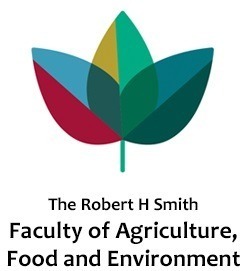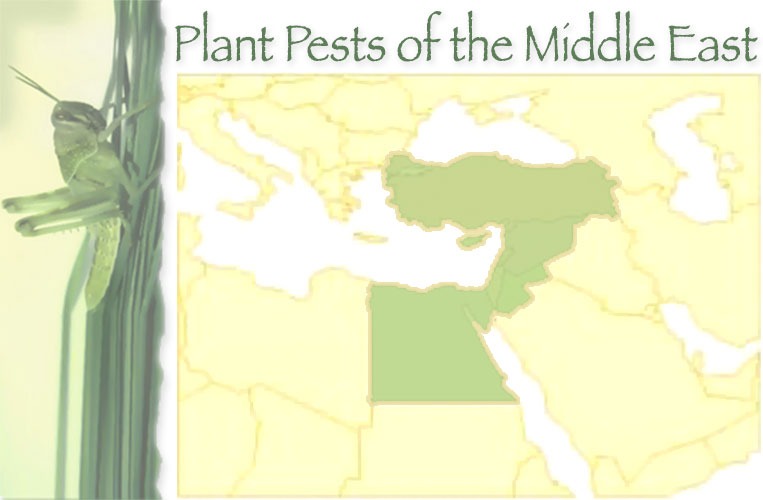Eakteiman, G. ; Moses-Koch, R. ; Moshitzky, P. ; Mestre-Rincon, N. ; Vassão, D. G. ; Luck, K. ; Sertchook, R. ; Malka, O. ; Morin, S. .
Targeting Detoxification Genes By Phloem-Mediated Rnai: A New Approach For Controlling Phloem-Feeding Insect Pests.
Insect Biochem Mol Biol 2018,
100, 10-21.
AbstractMany phloem-feeding insects are considered severe pests of agriculture and are controlled mainly by chemical insecticides. Continued extensive use of these inputs is environmentally undesirable, and also leads to the development of insecticide resistance. Here, we used a plant-mediated RNA interference (RNAi) approach, to develop a new control strategy for phloem-feeding insects. The approach aims to silence "key" detoxification genes, involved in the insect's ability to neutralize defensive and toxic plant chemistry. We targeted a glutathione S-transferase (GST) gene, BtGSTs5, in the phloem-feeding whitefly Bemisia tabaci, a devastating global agricultural pest. We report three major findings. First, significant down regulation of the BtGSTs5 gene was obtained in the gut of B. tabaci when the insects were fed on Arabidopsis thaliana transgenic plants expressing dsRNA against BtGSTs5 under a phloem-specific promoter. This brings evidence that phloem-feeding insects can be efficiently targeted by plant-mediated RNAi. Second, in-silico and in-vitro analyses indicated that the BtGSTs5 enzyme can accept as substrates, hydrolyzed aliphatic- and indolic-glucosinolates, and produce their corresponding detoxified conjugates. Third, performance assays suggested that the BtGSTs5 gene silencing prolongs the developmental period of B. tabaci nymphs. Taken together, these findings suggest that BtGSTs5 is likely to play an important role in enabling B. tabaci to successfully feed on glucosinolate-producing plants. Targeting the gene by RNAi in Brassicaceae cropping systems, will likely not eliminate the pest populations from the fields but will significantly reduce their success over the growing season, support prominent activity of natural enemies, eventually allowing the establishment of stable and sustainable agroecosystem.
Santos-Garcia, D. ; Juravel, K. ; Freilich, S. ; Zchori-Fein, E. ; Latorre, A. ; Moya, A. ; Morin, S. ; Silva, F. J. .
To B Or Not To B: Comparative Genomics Suggests As A Source Of B Vitamins In Whiteflies.
Front Microbiol 2018,
9, 2254.
AbstractInsect lineages feeding on nutritionally restricted diets such as phloem sap, xylem sap, or blood, were able to diversify by acquiring bacterial species that complement lacking nutrients. These bacteria, considered obligate/primary endosymbionts, share a long evolutionary history with their hosts. In some cases, however, these endosymbionts are not able to fulfill all of their host's nutritional requirements, driving the acquisition of additional symbiotic species. Phloem-feeding members of the insect family Aleyrodidae (whiteflies) established an obligate relationship with Portiera aleyrodidarum, which provides its hots with essential amino acids and carotenoids. In addition, many whitefly species harbor additional endosymbionts which may potentially further supplement their host's diet. To test this hypothesis, genomes of several endosymbionts of the whiteflies and were analyzed. In addition to , all three species were found to harbor one and one endosymbiont. A comparative analysis of genomes revealed that although all three are capable of synthesizing B vitamins and cofactors, such as pyridoxal, riboflavin, or folate, their genomes and phylogenetic relationship vary greatly. of and belong to the same clade, and display characteristics of facultative endosymbionts, such as large genomes (3 Mb) with thousands of genes and pseudogenes, intermediate GC content, and mobile genetic elements. In contrast, of belongs to a different lineage and displays the characteristics of a primary endosymbiont-a reduced genome (670 kb) with ~400 genes, 32% GC content, and no mobile genetic elements. However, the presence of 274 pseudogenes suggests that this symbiotic association is more recent than other reported primary endosymbionts of hemipterans. The gene repertoire of of is completely integrated in the symbiotic consortia, and the biosynthesis of most vitamins occurs in shared pathways with its host. In addition, endosymbionts have also retained the ability to produce riboflavin, flavin adenine dinucleotide, and folate, and may make a nutritional contribution. Taken together, our results show that hold a pivotal place in whitefly nutrition by their ability to produce B vitamins.
Malka, O. ; Santos-Garcia, D. ; Feldmesser, E. ; Sharon, E. ; Krause-Sakate, R. ; Delatte, H. ; van Brunschot, S. ; Patel, M. ; Visendi, P. ; Mugerwa, H. ; et al. Species-Complex Diversification And Host-Plant Associations In Bemisia Tabaci: A Plant-Defence, Detoxification Perspective Revealed By Rna-Seq Analyses.
Mol Ecol 2018,
27, 4241-4256.
AbstractInsect-plant associations and their role in diversification are mostly studied in specialists. Here, we aimed to identify macroevolution patterns in the relationships between generalists and their host plants that have the potential to promote diversification. We focused on the Bemisia tabaci species complex containing more than 35 cryptic species. Mechanisms for explaining this impressive diversification have focused so far on allopatric forces that assume a common, broad, host range. We conducted a literature survey which indicated that species in the complex differ in their host range, with only few showing a truly broad one. We then selected six species, representing different phylogenetic groups and documented host ranges. We tested whether differences in the species expression profiles of detoxification genes are shaped more by their phylogenetic relationships or by their ability to successfully utilize multiple hosts, including novel ones. Performance assays divided the six species into two groups of three, one showing higher performance on various hosts than the other (the lower performance group). The same grouping pattern appeared when the species were clustered according to their expression profiles. Only species placed in the lower performance group showed a tendency to lower the expression of multiple genes. Taken together, these findings bring evidence for the existence of a common detoxification "machinery," shared between species that can perform well on multiple hosts. We raise the possibility that this "machinery" might have played a passive role in the diversification of the complex, by allowing successful migration to new/novel environments, leading, in some cases, to fragmentation and speciation.


